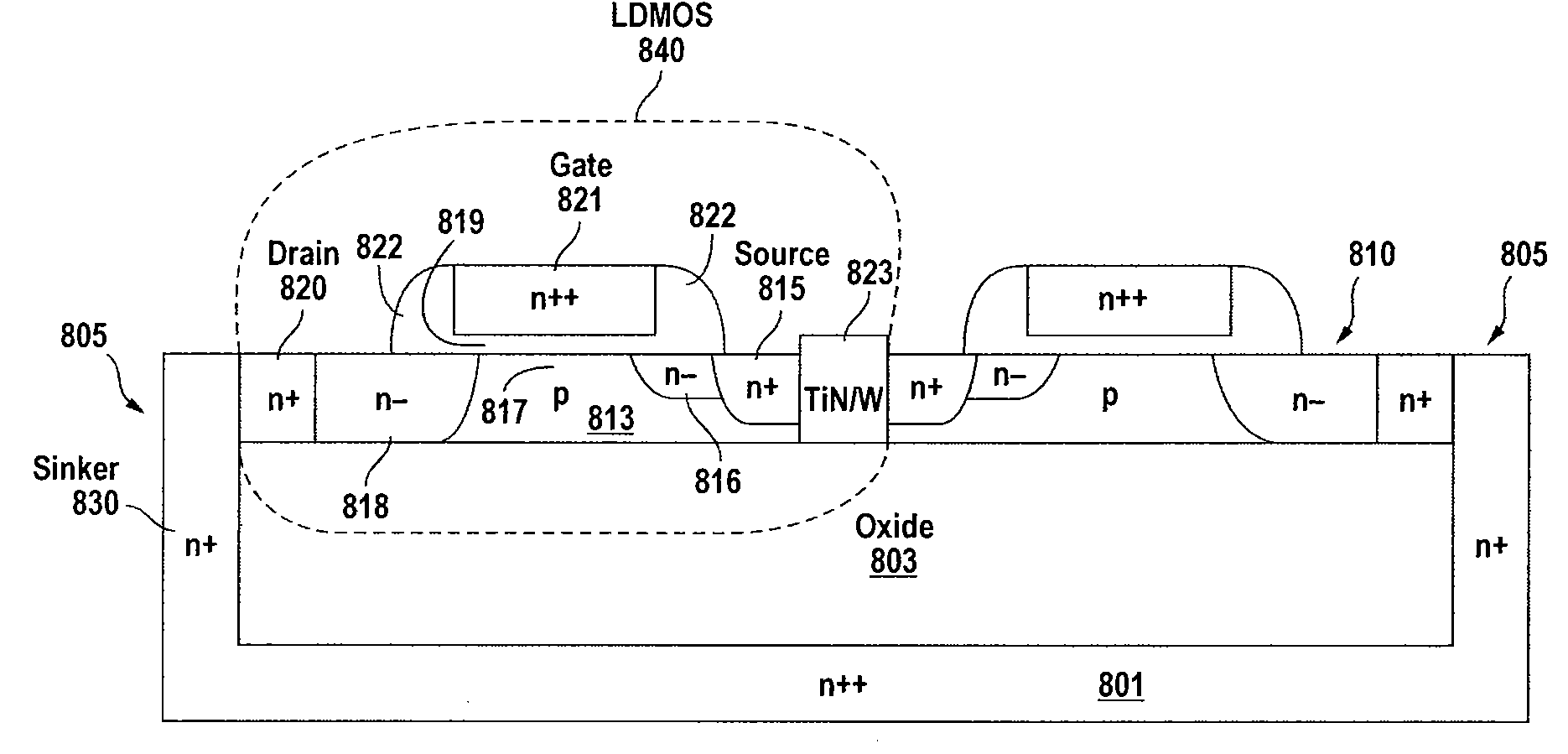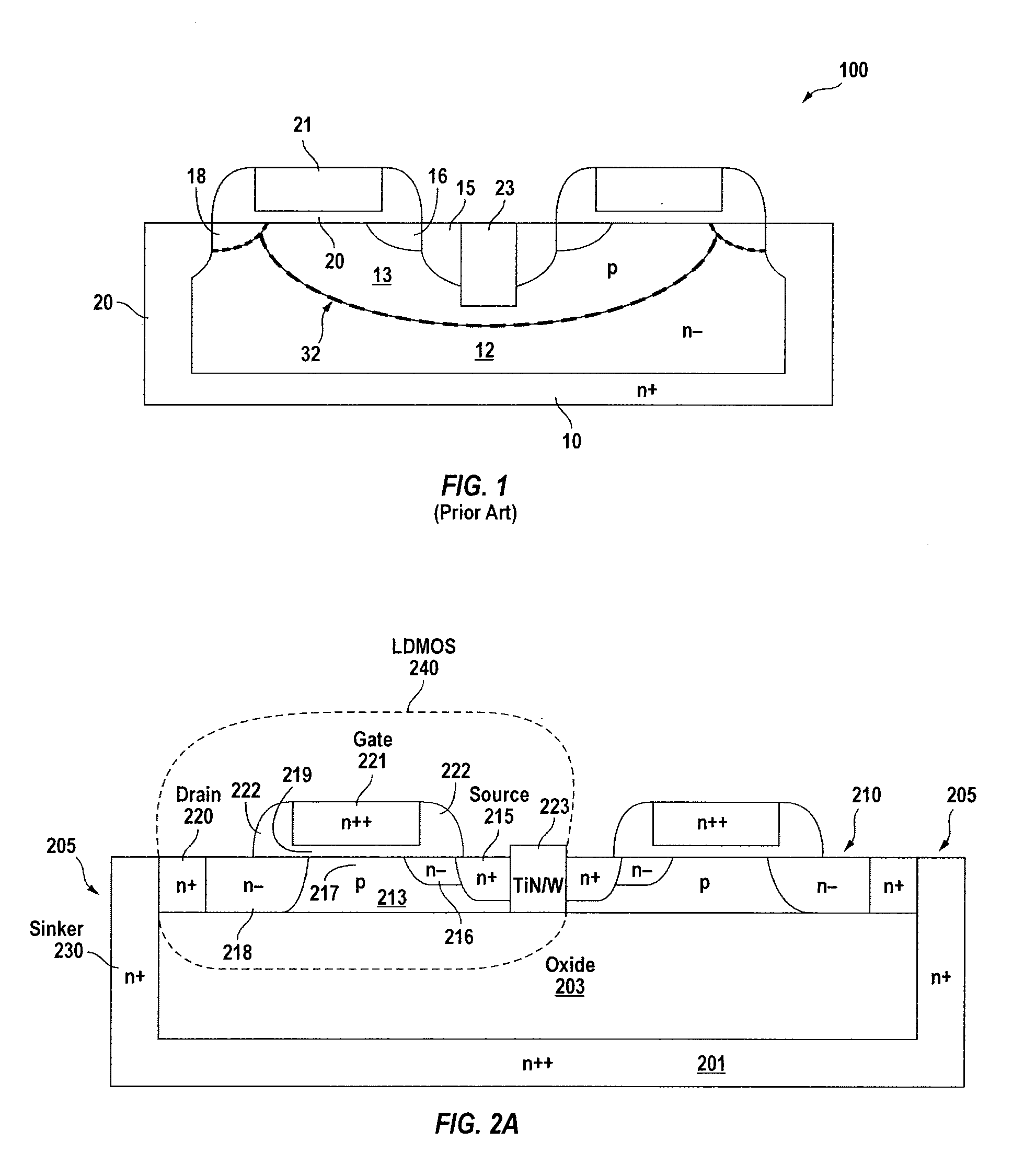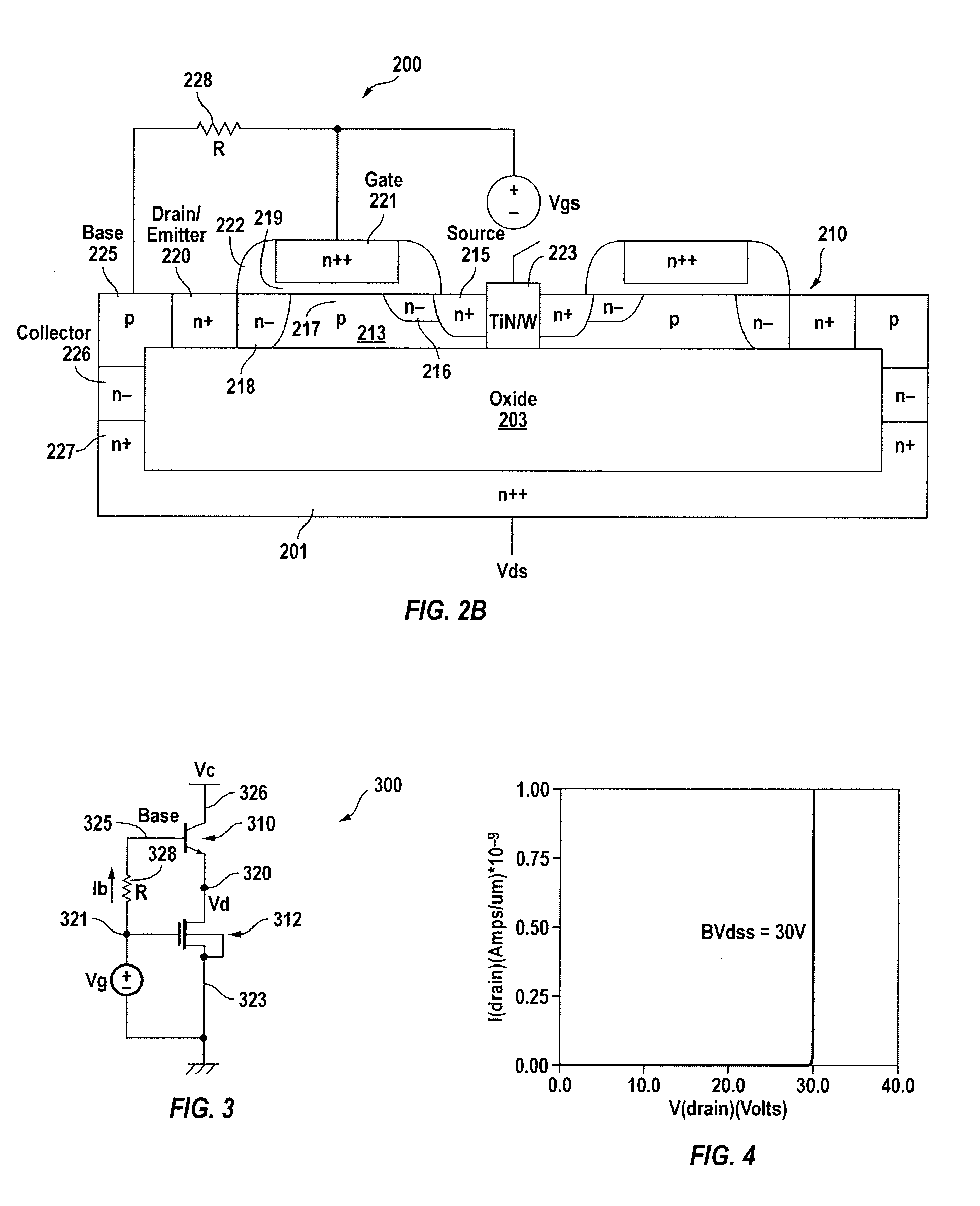Structure and method for semiconductor power devices
a technology of metal oxide semiconductor and structure, applied in semiconductor devices, diodes, electrical devices, etc., can solve the problems of limiting the switching speed of the device, affecting the efficiency of the device, so as to reduce the on-resistance, reduce the gate charge, and reduce the breakdown voltage
- Summary
- Abstract
- Description
- Claims
- Application Information
AI Technical Summary
Benefits of technology
Problems solved by technology
Method used
Image
Examples
Embodiment Construction
[0028]As discussed above, even though LDMOS is widely used in power applications, conventional LDMOS suffers from many limitations. For example, the gate charge can be high due to the relatively large depletion regions. Also, the breakdown voltage BVdss for LDMOS is usually limited by the p-n junctions. Additionally, Rdson in the conventional LDMOS as shown in FIG. 1 tends to be high because the current flows through a 900 path, first laterally along a surface region and then vertically into the drain at the back side of the substrate. Thus, it is desirable for LDMOS device structures and cost-effective manufacturing methods that offer improved device performance.
[0029]In accordance with embodiments of the present invention, a composite semiconductor device is provided that includes an MOS transistor built in an SOI layer combined with a bipolar transistor. The drain of the MOS transistor also forms the emitter of the bipolar transistor, and the base of the bipolar transistor is cou...
PUM
 Login to View More
Login to View More Abstract
Description
Claims
Application Information
 Login to View More
Login to View More - R&D
- Intellectual Property
- Life Sciences
- Materials
- Tech Scout
- Unparalleled Data Quality
- Higher Quality Content
- 60% Fewer Hallucinations
Browse by: Latest US Patents, China's latest patents, Technical Efficacy Thesaurus, Application Domain, Technology Topic, Popular Technical Reports.
© 2025 PatSnap. All rights reserved.Legal|Privacy policy|Modern Slavery Act Transparency Statement|Sitemap|About US| Contact US: help@patsnap.com



